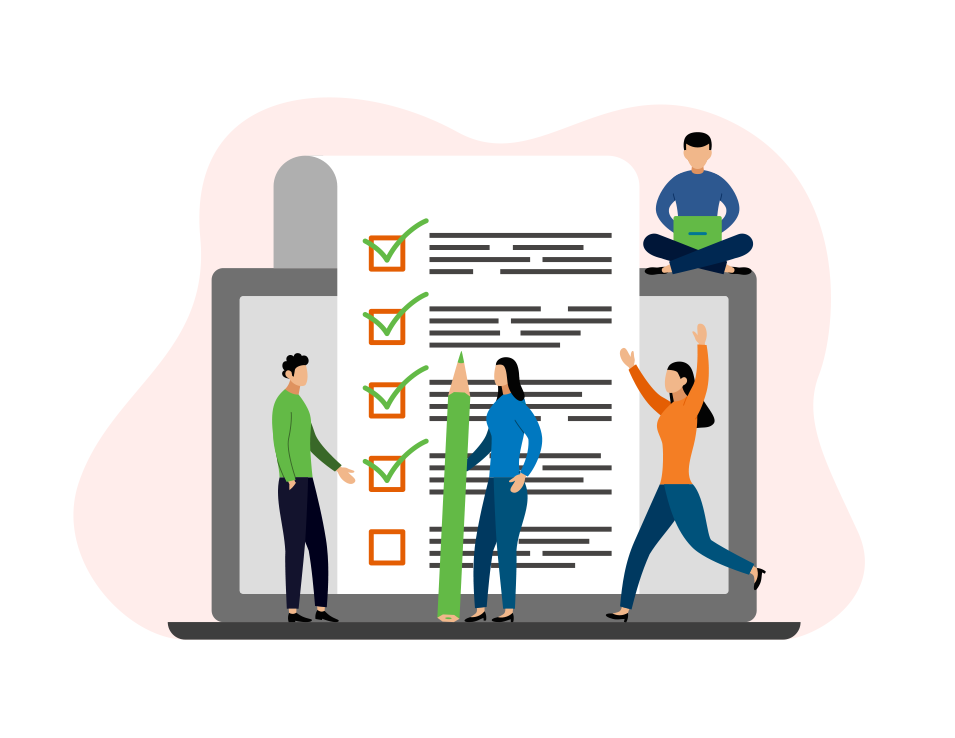I Think I Can’t, I Think I Can’t

As a people manager, you’ve likely heard one of these lines or something very similar. Change is scary. Doing something new or adjusting how we do something from how we’re accustomed to doing it can be very challenging. You may have members of your team that are simply not getting things done the way it needs to be done. But here’s the thing. Do you as their manager understand why there’s an issue with the task or expectation? In other words, can you determine if they don’t know it, can’t do it, or won’t do it?
Okay, that sounds kinda cryptic. What is meant by don’t, can’t, or won’t? Well, don’t know it means the employee didn’t know about or lacks the necessary information or skills to perform the task or meet the expectation. Therefore, you need to teach them about it and possibly even how to do it as well. We’ll come back to this one in a moment, after we talk about the other two.
Can’t do it means the employee doesn’t have the actual ability to perform the task due to factors beyond not knowing about it and/or how to do it. With a remote employee, this could be a technical or environmental barrier to address. If the ability to perform the task or meet a goal simply isn’t within the individual’s (physical, cognitive, etc.) ability, or other unresolvable barriers make it so they can’t succeed, then you may have to:
- Reconsider the task or standard,
- Reassign the task, or
- Evaluate if the employee is the right fit for the role.
It’s important to understand that in regard to legitimate “I don’t/didn’t know it” and “I can’t/couldn’t do it” reasons, it’s in the employer’s interest, and often their obligation, to support team members. If you want the objective met, you have to be willing to help them know it and ensure they can do it. It’s also possible that the standards or expectations may change from this new awareness of legitimate, but unresolvable, issues (e.g. budget, resources, time). In the end, the outcome in addressing any real concerns may even help other members of the team.
Assuming the expectations are not going to be changed and the ‘I can’t do it’ and ‘I don’t know it’ issues are addressed, you’re left with ‘I won’t do it’ as the only other possible reason. Getting the employee to recognize this is critical and sometimes difficult. ‘Not knowing’ and ‘not being able’ are both actual barriers whereas “not being willing” is a choice. It can be a challenge getting someone to recognize that it’s a choice to not do it and/or not prioritize it as needed. It’s a decision made that can be changed but many will prefer not to change it. The employee has the ability, has the knowledge, and has the means but they are still choosing not to perform the task or meet the expectation. Once they are aware of, and acknowledge, this choice has been made by them, it completely changes the discussion from “Why isn’t this happening?” to “Will you choose to do it?” It changes it from what may be just excuses, to them deciding whether they are willing to change their mind. Great examples here include the classic, “this is how we’ve always done it” or “that’s not my job.” These aren’t legitimate barriers; these are defensive positions meant to support their choice. This issue is behavioral, and it requires some structure and courage to address effectively. It often leads to performance management or stronger interventions. Fortunately, there’s often an easier way through this.
It starts by clarifying whether this is indeed an ‘I won’t do it’ issue. In many cases, assuming the individual agrees that the barriers ‘I can’t do it’ and ‘I don’t know how’ have been addressed, it’s simply a matter of calling them out on the ‘I won’t do it’ excuse. Leading them to understand that it’s a choice they’re making is key. It’s a natural protective human response to cover our misses with excuses when, in reality, we’ve simply chosen the ‘I won’t’ option.
Whew! That’s a lot to agree with and debating this strategy could be fun! Instead, let’s jump to why all this pertains to learning solutions. Afterall, we’re a learning solution company so why are we even talking about this in such detail?
The reason is that great learning is very often about changing behaviors.
Changing Behaviors – The Crux of Training Initiatives
Changing behaviors, is typically at the crux of most training initiatives we help our clients employees through. It doesn’t matter what the topic is, most training leads to a behavior change; whether it’s intentional or not. It could be how a math problem is solved, how a customer is greeted, when or how an issue is escalated, or whether a prospective buyer chooses a particular offering. It’s all behavior change. So, in this context and assuming the issue is “I don’t know it”, then it’s in our best interest (and really our obligation) to help the employee fully understand the task, expectation, or goal. Do you remember the blog on Guerrilla Training? This is where that comes in. You’ll need to determine what level of knowledge transfer is needed and how to deliver it quickly and most effectively.
“Culture eats process for breakfast!” is a play on Peter Drucker’s famous quote. Dealing with processes and behavioral changes is tied directly to culture. Cultural change is a difficult task and so it needs to be done in an adaptive, responsive, creative, and opportunistic fashion – it needs to be Guerrilla! It might be as simple as an email, a checklist, or a quick video or it may be more developed training such as an online course, simulation, or live workshop. It’s very likely to be some combination of all of this too! One way or another, you’ll need to address the ‘I don’t know’ concerns in order to overcome what may actually be an ‘I won’t’ issue. Tracking and remediating the above examples can really help to ensure complete understanding of what they needed to know existed at a certain point in time.
…And so this is where the connection to learning and training comes in. It’s where the appropriate expertise, tools, services, and willingness to address the “I don’t know” aspect of all this becomes relevant.
Remember, most employees do want to be good at their jobs. Their reasons and motivations will differ but very few actually want to fail. Most want to achieve the business goals along with their personal goals – so help them! Use tracked learning to ensure they are supported on this most important leg of this execution tripod; ‘don’t know it’, ‘can’t do it’, and ‘won’t do it’. It will be a key step in moving them away from “I think I can’t, I think I can’t” to “I know I can, I know I can!”






